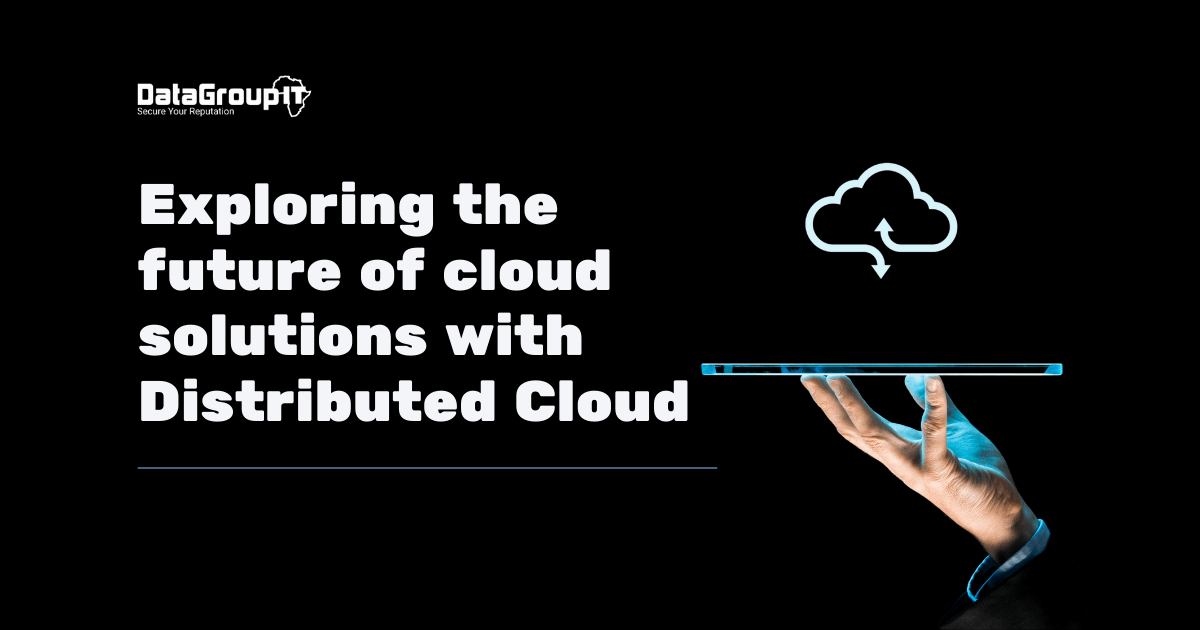Since making a splash in the early part of the last decade, Cloud Computing has continued to evolve in order to cater to the varying use cases presented by enterprises all over the world. With the buzz word culture engulfing the technology lexicon, you would be forgiven for not keeping up with what Private Cloud, Public Cloud, Hybrid Cloud or Edge Computing are. But what if we told you that there is a new iteration on the horizon and it’s a combination of all four?
According to the Gartner Glossary, “Distributed Cloud is the distribution of public cloud services to different physical locations, while the operation, governance, updates and evolution of the services are the responsibility of the originating public cloud provider.” In simpler terms, it is a cloud computing model that serves data from geographically distributed sites to boost performance. Touted as the next generation of cloud computing, Distributed Cloud is top of mind for any CIO or CISO who keep’s their finger on the pulse. But first, a brief history lesson.
Public Cloud
Public Cloud consists of computing services offered by third-party providers that are delivered via the internet and shared across organisations. Due to its high elasticity, scalability and low cost subscription model, it is currently the most popular option for small, medium and even some large organisations.
The key factor is that the cloud service provider is held responsible for all management and maintenance of the system. However, as much as that is an advantage, it also means that enterprises don’t have much control over the infrastructure.
This may then present a challenge when there is a need to meet specific compliance requirements. Additionally, Public Cloud is the least secure option and is not recommended for sensitive operations.
Private Cloud
The distinguishing factor between Public and Private Cloud is that with Private Cloud your organisation is not sharing cloud computing resources with any other organisation. The computing resources are isolated and delivered via a secure private network. This means that it is more secure and more suitable for the handling of sensitive data.
Additionally, by offering more control and customisability, the Private Cloud seeks to make up for the shortcomings of the Public Cloud. However, this comes at a price. The total cost of ownership, and subsequent maintenance, of a Private Cloud solution is significantly higher as compared to a Public Cloud solution.
In some instances though it has been argued that with the right security measures such as intrusion detection and prevention systems, the Public Cloud can be as secure as the most effectively managed private cloud implementations.
Hybrid Cloud
As its name suggests, Hybrid Cloud is a combination of the Private and Public Cloud. The most popular use case is that of enterprises that store sensitive data on the Private Cloud and leverage the powerful resources of a managed Public Cloud for workloads and data that aren’t sensitive, which in turn leads to cost savings.
A hybrid cloud strategy provides businesses with greater flexibility by moving workloads between cloud solutions as needs and costs fluctuate. Hybrid Cloud also allows organisations to use more than one service provider.
For instance, an organisation may use Amazon’s AWS for its apps, and Microsoft’s Azure for storage. However, with all these benefits comes additional infrastructure complexity, security risk and greater management of the cloud infrastructure spanning different locations and categories.
Edge Computing
The traditional computing infrastructure built on a centralised data centre isn’t well suited for the huge amounts of data routinely collected from sensors and Internet of Things (IoT) devices operating in real time from remote locations across the globe. As such, Edge Computing is the deployment of computing and storage resources at the location where data is produced.
For example, where IoT devices such as security cameras or machine sensors are collecting and generating data, an Edge Computing solution moves some portion of storage and computing resources out of the central data centre and closer to the source of the data itself. Rather than transmitting raw data to a central data centre for processing and analysis, that work is instead performed where the data is actually generated, at the “edge” of the network.
Edge computing has become relevant because it offers an effective solution to emerging network problems associated with moving enormous volumes of data that today’s organisations produce and consume. It’s not just a problem of amount. It’s also a matter of time; applications depend on processing and responses that are increasingly time-sensitive. Bandwidth, Latency and Congestion continue to be major issues within the African context but Edge Computing takes a huge step in the direction of making them a thing of the past.
Edge computing is viewed increasingly as essential for applications that process huge volumes of data at high speeds or in real time, when low latency is critical.
So, what is Distributed Cloud?
Distributed cloud is a public cloud computing service that lets you run public cloud infrastructure in multiple locations, including your cloud provider’s infrastructure, on premises, and in other cloud providers’ data centres while managing everything from a single control plane. Cloud services from public cloud providers become ‘distributed’ out to specific and varied physical locations. This is helping companies surmount the challenges of complying with country or industry-specific data privacy regulations. Distributed cloud has also played a significant role in providing compute services to employees deployed to different places due to the COVID-19 pandemic.
The cloud provider retains central control over the operations, updates, governance, security and reliability of all distributed infrastructure while the end-user accesses the centralized cloud services powered by the compute stack as close as possible to them. As mentioned, Distributed Cloud distributes a public cloud provider’s entire compute stack to wherever a customer might need it. This of course may create some confusion between Distributed Cloud and Edge Computing. Distributed Cloud however eases the management of multiple edge servers by allowing you to manage them centrally and consistently. Without Distributed Cloud, the tools and tasks required for making security updates, managing your Kubernetes clusters or monitoring performance may differ, which adds to effort and costs.
Distributed Cloud clearly has many advantages such as high performance, scalability, flexibility, increased compliance etc, but how does it fair when it comes to handling risk?
The reality is that complex networks like Distributed Cloud increase the surface area for security threats. There are more authorization controls, more integration challenges, and certainly a lot more dependencies to consider. This requires the right expertise and a safety-first mindset across the whole organisation. Companies must have best-in-class security policies in place to safeguard their data, clients, and operations.
To ensure watertight security in Distributed Cloud environments, enterprises should revise their entire security posture. DataGroupIT is the perfect place when it comes to all things Cloud security. We strongly believe in principles such as “Zero Trust” that promotes a least privilege governance strategy whereby users are only given access to the resources they need to perform their duties. Similarly, it calls upon an organisation to ensure that web-facing applications are properly secured. Distributed Cloud and Cloud technology in general promises an exciting future, DataGroupIT can secure that future.




